Introduction and The Package

We don't get to use our Surround Vision / Eyefinity setup that much with the last time we used it being when we tested the MARS 2 from ASUS. Really, though, since then there's not been much reason to use it. With video card setups being pretty quiet lately and nothing changing in that department this year, the monitor setup has just been gathering hardware around it. Until today, though, where I found myself cleaning for an hour before I could actually move my testbed next to it.
With four HD 6970s on hand, though, and the new Sandy Bridge-E platform getting a good work out lately via both a 3-Way CrossFireX Article and 4-Way CrossFireX Article, it seemed the final piece of the puzzle was to see the kind of performance at the ultra-high 3600 x 1920 resolution.
So that brings us to where we are today. We've got our three Dell U2410 monitors running in portrait mode as you can see in the above picture. To accompany that, we've got our four HD 6970s from Sapphire and sitting under them we find our ASUS Rampage IV Extreme and Intel Core i7 3960X.
Well, for the most part that pretty much covers everything we need to talk about now. We'll be following a similar layout to what you've seen in our other articles using the video cards we've got here today, minus the removal of the synthetic benchmarks. Before we look at the performance side of things, though, we'll just quickly go over our testbed.
Test System Setup

We would like to thank the following companies for supplying and supporting us with our test system hardware and equipment: Intel, ASUS, Sapphire and Corsair.
Like we just mentioned in our introduction, you're not going to see anything too out of the ordinary here when it comes to our testbed. We've actually removed the 990FX setup like we did in our 4-Way article, but we've also removed the Z68 in this case as the results from that aren't all that relevant here.
We've also cut 3DMark 11 and Unigine Heaven out along with our AA / AF tests. For comparisons sake we've also dropped the 1920 x 1200 results. Instead we're mainly just comparing the performance of the 3600 x 1920 resolution against that single larger 2560 x 1600 resolution that's present on our 30" monitor.
At 3600 x 1200 we've ran our Sandy Bridge-E setup in two forms; the first is with four HD 6970s installed, the second is with three HD 6970s installed. This will help give us a good idea on the scaling of the system when we move to this resolution which is around 70% more intensive than just a single 2560 x 1600 monitor.
That should just about cover everything, so let's get into some games to see what exactly is going on.
Let's get started!
The FPS Numbers Explained
When we benchmark our video cards and look at the graphs, we aim to get to a certain level of FPS which we consider playable. While many may argue that the human eye can't see over 24 FPS or 30 FPS, any true gamer will tell you that as we climb higher in Frames Per Seconds (FPS), the overall gameplay feels smoother. There are three numbers we're looking out for when it comes to our benchmarks.
30 FPS - It's the minimum number we aim for when it comes to games. If you're not dropping below 30 FPS during games, you're going to have a nice and smooth gaming experience. The ideal situation is that even in a heavy fire fight, the minimum stays above 30 FPS making sure that you can continue to aim easily or turn the corner with no dramas.
60 FPS - It's the average we look for when we don't have a minimum coming at us. If we're getting an average of 60 FPS, we should have a minimum of 30 FPS or better and as mentioned above, it means we've got some smooth game play happening.
120 FPS - The new number that we've been hunting down over recent months. If you're the owner of a 120 Hz monitor, to get the most out of it you want to get around the 120 FPS mark. Moving from 60 FPS / 60 Hz to 120 FPS / 120 Hz brings with it a certain fluidity that can't really be explained, but instead has to be experienced. Of course, if you're buying a 120 Hz monitor to take advantage of 3D, an average of 120 FPS in our benchmark means that in 3D you will have an average of 60 FPS, which again means you should expect some smooth gameplay.
Benchmarks - Tom Clancy's H.A.W.X. 2
Tom Clancy's H.A.W.X.2
Version and / or Patch Used: Benchmark Demo
Timedemo or Level Used: Built-in Test
Developer Homepage: http://www.ubi.com/UK/default.aspx
Product Homepage: http://www.hawxgame.com/
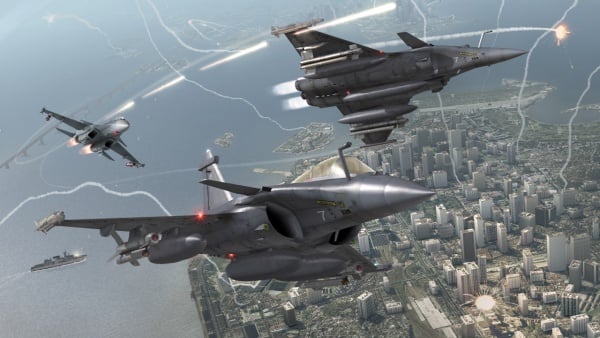
Tom Clancy's H.A.W.X. 2 is an arcade-style flight action game developed by Ubisoft Romania and published by Ubisoft. The game is the sequel to Tom Clancy's H.A.W.X., released in 2009.
The game begins with Colonel David Crenshaw participating in a routine patrol mission in the Middle East. After halting an insurgent attack, a volley of missiles is fired at the Air Force base that Crenshaw was stationed at, with one of the missiles disabling Crenshaw's aircraft, resulting Crenshaw being in enemy captivity. A joint strike force composed of the U.S. Navy, U.S. Air Force, and a Ghost Recon squad executes an operation to rescue Crenshaw. In Scotland, Royal Navy Pilot Colin Munro encounters an unidentified passenger aircraft that explodes from an on-board bomb when undergoing training exercise. In Russia, an air force squadron led by Colonel Denisov and Captain Dmitri Sokov engages separatist aircraft but is ordered to retreat from the region after numerous Russian military installations have been attacked.

Starting off with H.A.W.X. 2, we can see that massive hit in performance when we move to the 3600 x 1920 resolution. You can see the extra card gives us a boost of about 20% and offers us really nice FPS still. You'd have some silky smooth game play on a set of 120Hz monitors.
Benchmarks - Mafia II
Mafia II
Version and / or Patch Used: Latest Steam Update
Timedemo or Level Used: Built in Benchmark
Developer Homepage: http://www.2kczech.com/
Product Homepage: http://www.mafia2game.com/
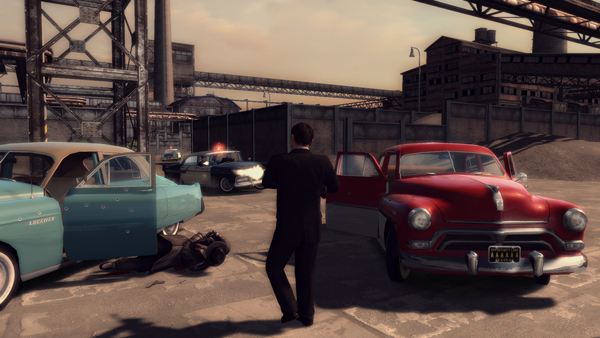
Mafia II is a third-person action-adventure video game, the sequel to Mafia: The City of Lost Heaven. It is developed by 2K Czech, previously known as Illusion Softworks, and is published by 2K Games. The game is set from 1943 to 1951 in Empire Bay (the name is a reference to New York's state nickname "The Empire State"), a fictional city based on San Francisco and New York City, with influences from Chicago and Detroit. The game features a completely open-ended game map of 10 square miles. No restrictions are included from the start of the game. There are around 50 vehicles in the game, as well as licensed music from the era.

Mafia II continues to be one of the more annoying games when it comes to multi card setups. With an early wall hit at about 120FPS and a slight decrease with a forth card, performance is a little weird. Overall, though, we're a good chunk over that 60 FPS mark we aim for, so you should be able to enjoy some smooth gameplay.
Benchmarks - Lost Planet 2
Lost Planet 2
Version and / or Patch Used: Benchmark Demo
Timedemo or Level Used: Built in Benchmark - Test A Scene 1
Developer Homepage: http://www.capcom.com/
Product Homepage: http://www.lostplanet2game.com/
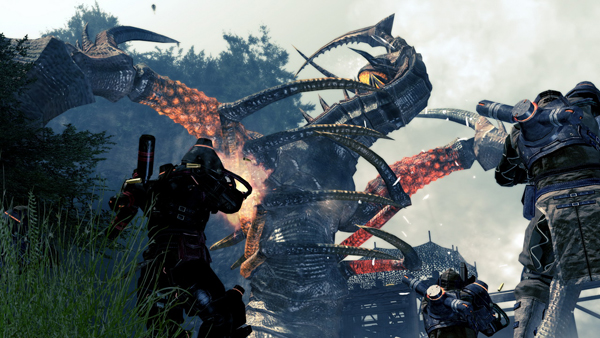
Lost Planet 2 is a third-person shooter video game developed and published by Capcom. The game is the sequel to Lost Planet: Extreme Condition which is also made by Capcom, taking place ten years after the events of the first game, on the same fictional planet. The story takes place back on E.D.N. III 10 years after the events of the first game. The snow has melted to reveal jungles and more tropical areas that have taken the place of more frozen regions. The plot begins with Mercenaries fighting against Jungle Pirates. After destroying a mine, the Mercenaries continue on to evacuate the area, in which a Category-G Akrid appears and attacks them. After being rescued, they find out their evacuation point (Where the Category-G appeared) was a set-up and no pick up team awaited them. The last words imply possible DLC additions to the game, "There's nothing to be gained by wiping out snow pirates... unless you had some kind of grudge."

Looking at Lost Planet 2, you can see the intensity of the game here as we lose a massive amount of FPS when moving from the single screen. With three cards we've got playable numbers....just. Adding the fourth card into the mix, though, does an excellent job in boosting those numbers.
Benchmarks - Aliens vs. Predator
Aliens vs. Predator
Version and / or Patch Used: Standalone Benchmark
Timedemo or Level Used: Built in Benchmark
Developer Homepage: http://www.rebellion.co.uk/
Product Homepage: http://www.sega.com/games/aliens-vs-predator/
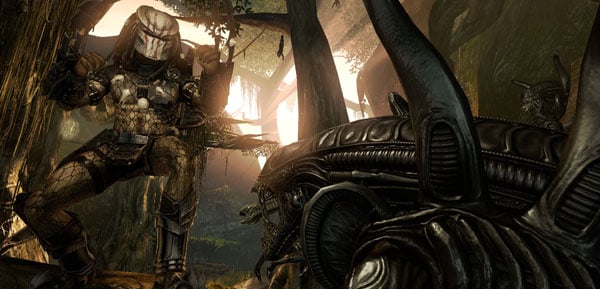
Aliens vs. Predator is a science fiction first-person shooter video game, developed by Rebellion Developments, the team behind the 1999 original PC game, and published by Sega for Microsoft Windows, the PlayStation 3 and the Xbox 360. The game is based on the Alien vs. Predator franchise, a combination of the characters and creatures of the Alien franchise and the Predator franchise. There are three campaigns in the game, one for each race/faction (the Predators, the Aliens and the Colonial Marines), that, while separate in terms of individual plot and gameplay, form one overarching storyline.
Following the storyline of the campaign modes comes the multiplayer aspect of the game. In this Multiplayer section of the game, players face off in various different gametypes in various different ways.

Another really intensive game and you can see here that the three card setup again offers us just enough performance to break that 60 FPS mark we aim for. Adding the fourth card into the mix, though, gives us a really nice boost in performance here.
Benchmarks - Metro 2033
Metro 2033
Version and / or Patch Used: Latest Steam Update
Timedemo or Level Used: Built in Benchmark
Developer Homepage: http://www.4a-games.com/
Product Homepage: http://www.thqnordic.com/
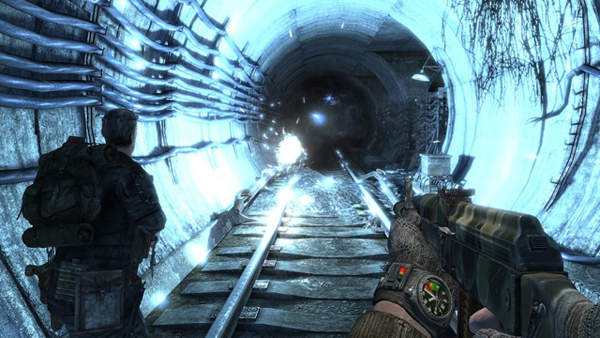
Metro 2033 is an action-oriented video game with a combination of survival horror and first-person shooter elements. The game is based on the novel Metro 2033 by Russian author Dmitry Glukhovsky. It was developed by 4A Games in Ukraine and released in March 2010 for Microsoft Windows and Xbox 360.[3] In March 2006, 4A Games announced a partnership with Glukhovsky to collaborate on the game.[4] The game was announced at the 2009 Games Convention in Leipzig;[5] a first trailer came along with the announcement.[6] A sequel was announced, currently titled Metro: Last Light.

Metro 2033 like our last two games again is a very intensive one. The difference is here we're seeing the three card setup offer us FPS below that 60 FPS mark we always aim for. The forth card gives us a boost of about 15% and it's enough to get us over the line with a couple of FPS to spare.
Benchmarks - Dirt 3
Dirt 3
Version and / or Patch Used: Latest Steam Update
Timedemo or Level Used: Built in Benchmark
Developer Homepage: http://www.codemasters.com/
Product Homepage: http://www.dirt3game.com/
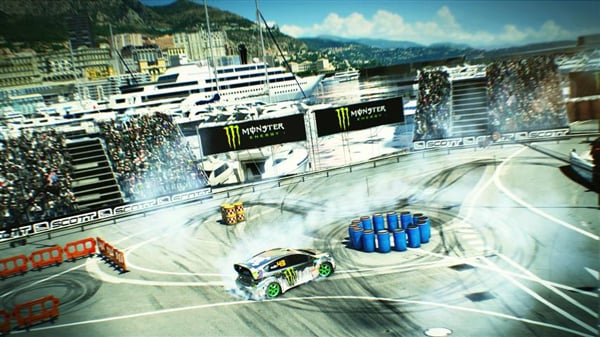
DiRT 3 boasts more cars, more locations, more routes and more events than any other game in the series, including over 50 rally cars representing the very best from five decades of the sport. With more than double the track content of 2009's hit, DiRT 3 will see players start at the top as a professional driver, with a top-flight career in competitive off-road racing complimented by the opportunity to express themselves in Gymkhana-style showpiece driving events.

The numbers under Dirt 3 were quite surprising to be honest. It doesn't always seem to be the most intensive game, but you can see we continue to get that massive hit in performance when compared to the single 30" monitor. Like we've seen most of the time here, we've got playable FPS on the three card setup, but adding that fourth one helps give us a nice boost in performance which is always appreciated.
Benchmarks - Far Cry 2
Far Cry 2
Version and / or Patch Used: 1.01
Timedemo or Level Used: Ranch Long
Developer Homepage: http://www.ubi.com/
Product Homepage: http://www.farcry2.com/
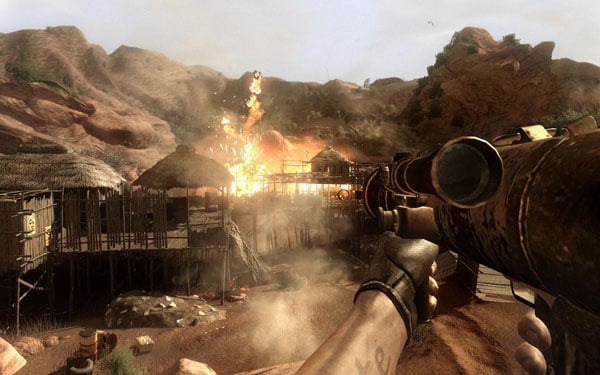
The Dunia Engine was built specifically for Far Cry 2 by the award-winning Ubisoft Montreal development team. It delivers the most realistic destructible environments, amazing special effects such as dynamic fire propagation and storm effects, real-time night-and-day cycle, dynamic music system, non-scripted enemy A.I. and so much more.

Still good FPS under Far Cry 2, but you can see we're not talking about the 165 FPS minimum we see on the single 2560 x 1600 monitor. We even see some strong scaling again when we add the extra card into the mix.
Final Thoughts
These quad card setups have come a long way; you can really see there's some excellent scaling on offer when we compare the three and four card setups to each other at 3600 x 1920. Metro 2033 was the only game we saw the three card setup drop below the 60 FPS mark we aim for. Throwing the fourth card into the mix, though, gave us a nice little boost.
Looking through the numbers, you might find yourself wondering why bother throwing the fourth card into the mix. Well, while our in game detail is pretty much maxed out on all the games, AA and AF isn't on. Not only that, if you're on a 120Hz screen, you're going to want to be closer to 120 FPS average than 60 FPS average.
The results were really interesting, though, and it's nice to see that there's some really good scaling coming out of these expensive setups. You could see that with a single 2560 x 1600 monitor the four and three card setups had absolutely no trouble dealing with anything you throw at them. Push up to these Eyefinity resolutions and the picture begins to change; no longer are you going to be enjoying an average of 150 FPS under super intensive games like Lost Planet 2 and Aliens vs. Predator which lay such a good base line for new games that aren't as intensive as these.
If you're using a single monitor, especially a high resolution 27" or 30", going down the dual GPU path is pretty easy. Moving above that, though, is a little iffy as three and four cards while offering a boost in performance, don't do heaps in terms of having a game that wasn't playable being playable now.
If you're going to go down the multi monitor path, though, which is something that's becoming more and more common thanks to aggressive pricing on monitors, you could easily see the use for three and four card setups.
A 2560 x 1600 monitor requires a lot of GPU grunt to run; a 3x 1920 x 1200 Eyefinity / Surround Vision setup is around 70% more intensive than that single monitor. A bit like Eyefinity and Surround Vision, three and four card setups aren't for everyone. Nor are $1,000 US CPUs and $400 US Motherboards.
If you're spending the big bucks, the chances are you'll be looking at a decent multi GPU, multi monitor setup, and for good reason.

 United
States: Find other tech and computer products like this
over at
United
States: Find other tech and computer products like this
over at  United
Kingdom: Find other tech and computer products like this
over at
United
Kingdom: Find other tech and computer products like this
over at  Australia:
Find other tech and computer products like this over at
Australia:
Find other tech and computer products like this over at  Canada:
Find other tech and computer products like this over at
Canada:
Find other tech and computer products like this over at  Deutschland:
Finde andere Technik- und Computerprodukte wie dieses auf
Deutschland:
Finde andere Technik- und Computerprodukte wie dieses auf